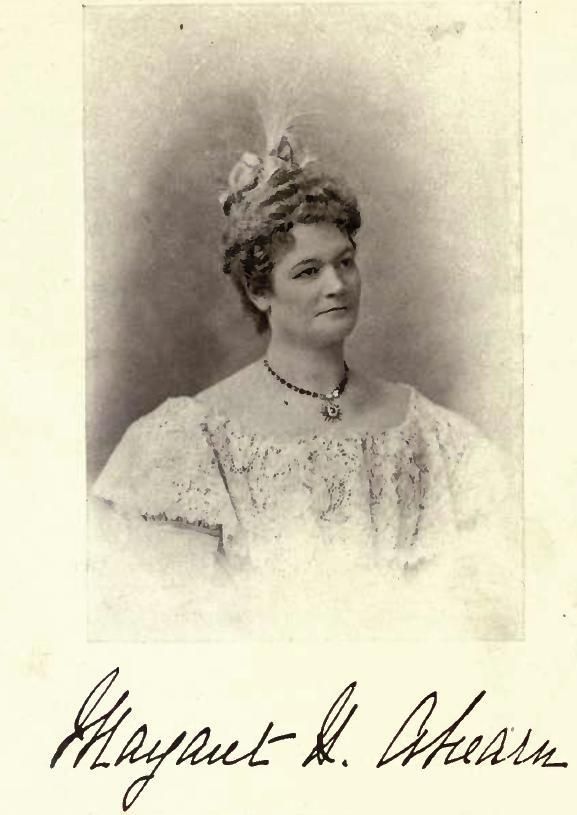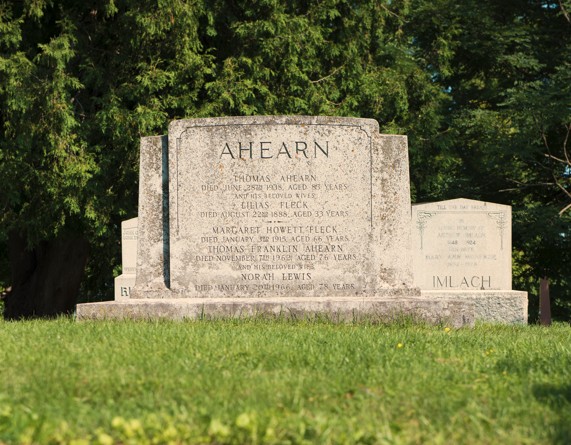
Margaret Howett Ahearn : A Trailblazer in Philanthropy, Rights, and the Arts
Margaret Howett Ahearn (née Fleck)
(1849 – January 3, 1915) Section 50, Lot 123
Born in Montreal, Quebec, in 1849, Margaret Howett Ahearn (née Fleck) was a woman of remarkable dedication and resilience, deeply engaged in civic, artistic, and philanthropic efforts. Educated at McGill Model School, Mill Normal School, and Bute Home, she developed a strong foundation in education, which she later applied to her many endeavors.
Margaret’s life took a significant turn in 1888 when, at the age of 38, she moved to Ottawa to care for her late sister’s two young children following her sister’s passing. This brought her into the home of her brother-in-law, Thomas Ahearn, an influential businessman, inventor, and pioneer of electrical technology in Canada.
Six years later, in 1894, Margaret and Thomas married. Their union was not only a partnership in life but also one of mutual engagement in forward-thinking social and technological advancements. Thomas Ahearn, often credited as the man who "lit up Ottawa," was instrumental in bringing electricity to the city and played a pivotal role in establishing the Ottawa Electric Railway Company. His innovations in public transportation and electrical services transformed daily life in Ottawa.
Margaret was an active participant in this new era of innovation, and she made history herself in 1900 when she became Ottawa’s first female driver, navigating Sparks Street in one of her husband’s electric vehicles. At a time when women were still fighting for basic rights, this act was a bold statement of progress and equality.
Margaret was deeply involved in various organizations that championed education, women’s rights, healthcare, and the arts. She was a founding member of the Women’s Canadian Historical Society of Ottawa (now the Historical Society of Ottawa), which sought to preserve and document Canada’s rich heritage. She also played a significant role in the Victorian Order of Nurses (VON), an organization dedicated to providing healthcare services to communities, particularly to those in need.
She served as the President of VON, guiding it through its formative years and strengthening its impact in Ottawa. Beyond her leadership in VON, Margaret was a director of the Women’s Art Association, fostering the development of women in the arts. She was also a member of Ottawa Ladies' College, which promoted women's education, The Local Council of Women, which worked on social reform, The Local Board of Management, contributing to governance and policy decisions.
Her commitment to these organizations reflects her dedication to uplifting women and advocating for social progress during a time when women’s roles in public life were often limited. Margaret was not only a civic leader but also an accomplished artist and historian. She published and presented her first paper to the Canadian Women’s Historical Society of Ottawa on May 11, 1900, highlighting her role as a scholar and researcher. Her passion for history and storytelling helped shape the organization’s mission of documenting Canada’s past.
Additionally, she was listed as a painter in the Biographical Index of Artists in Canada, underscoring her creative abilities. Her engagement in the Women’s Art Association suggests that she not only appreciated the arts but was an active participant in fostering artistic expression.
Margaret Howett Ahearn passed away on January 3, 1915, leaving behind a legacy of progress, philanthropy, and perseverance.

Her contributions to women’s organizations, healthcare, education, and the arts have had a lasting impact on Ottawa’s social and cultural fabric. Her life was a testament to the power of dedication and vision, and her influence continues to be felt through the institutions and movements she helped build. Today, she rests at Beechwood Cemetery, alongside her husband, in a city forever changed by their forward-thinking efforts.

